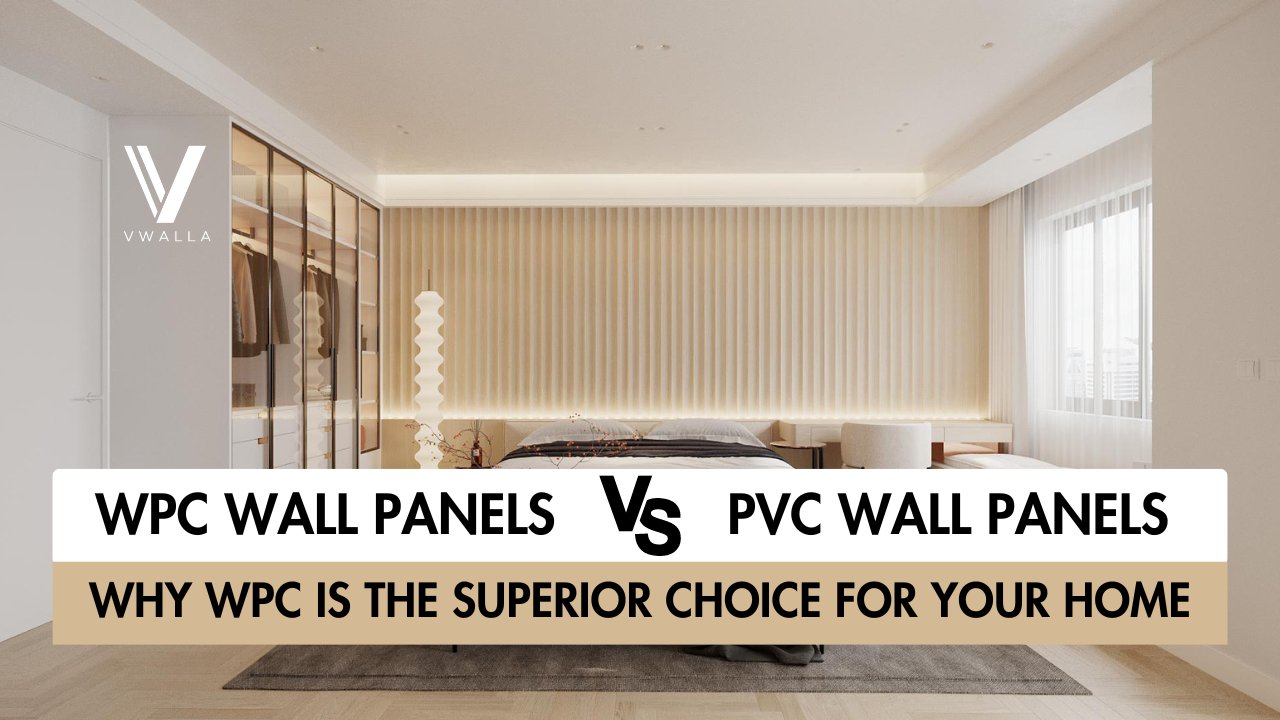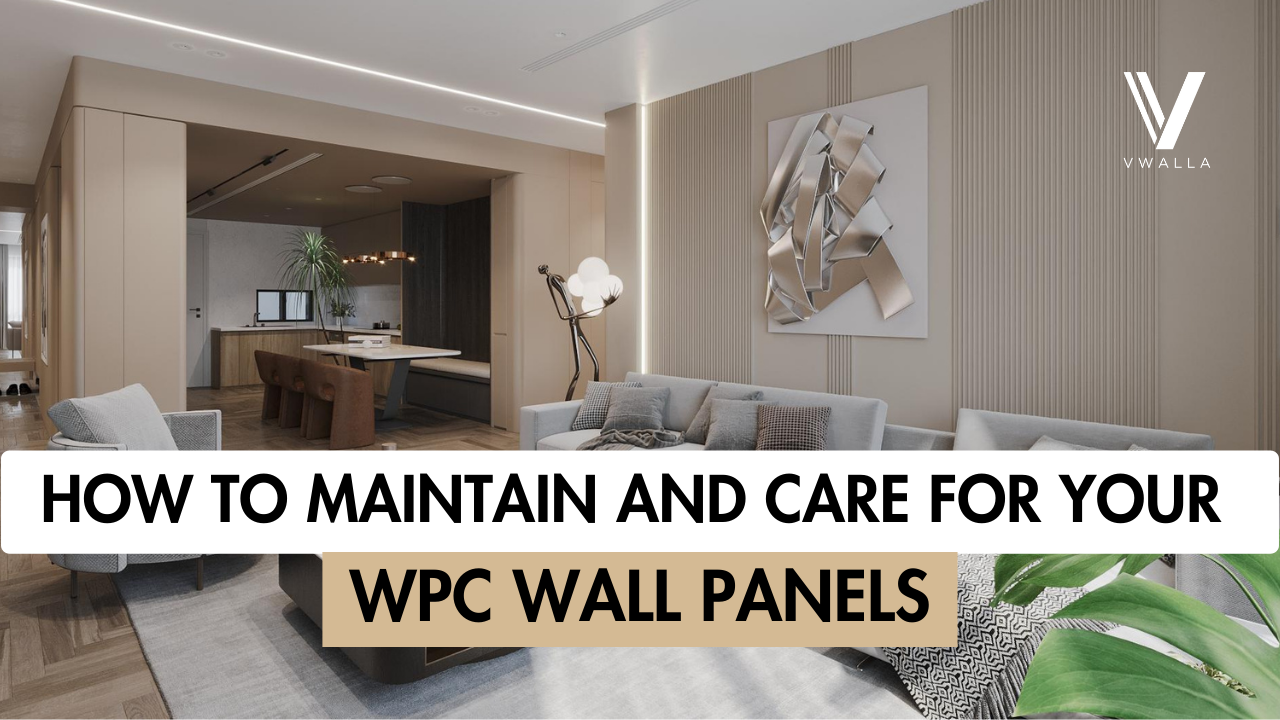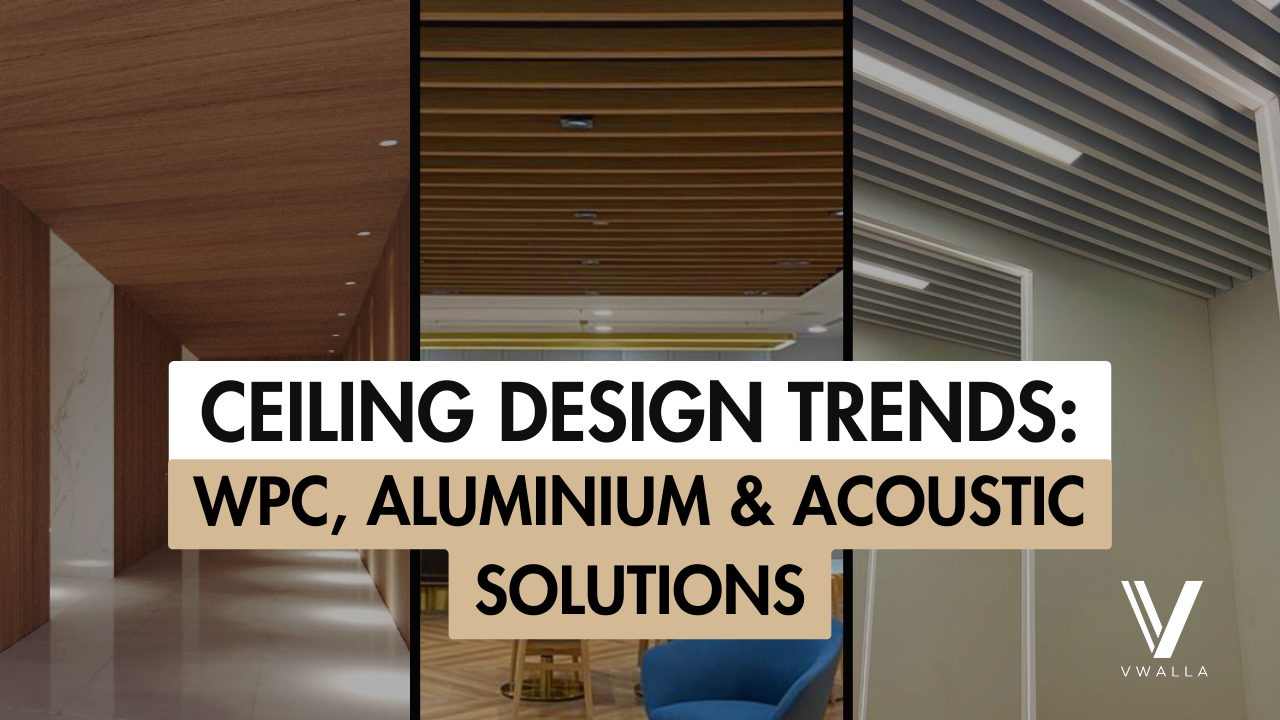
Ceiling Design Trends: WPC, Aluminium, and Acoustic Solutions
Ceiling design has evolved significantly from being a mere functional element to becoming a crucial aspect of architectural aesthetics and interior design. With the advent of innovative materials and creative approaches, the possibilities for ceiling design are now endless. This blog delves into the latest ceiling trends, focusing on Wood Plastic Composite (WPC), aluminium, and acoustic solutions, and highlights how these materials and trends are shaping the future of interior spaces.
- WPC Ceilings: Modern Sustainability
Natural Appeal and Durability
Wood Plastic Composite (WPC) ceilings offer a perfect blend of natural appeal and modern durability. Combining the aesthetic charm of wood with the resilience of composite materials, WPC ceilings have become a preferred choice in various settings, from residential homes to commercial spaces and hospitality venues. The rich, warm look of wood is timeless, but WPC enhances this appeal with added benefits like resistance to moisture, insects, and rot. This makes WPC an excellent choice for areas prone to humidity or requiring long-lasting materials.
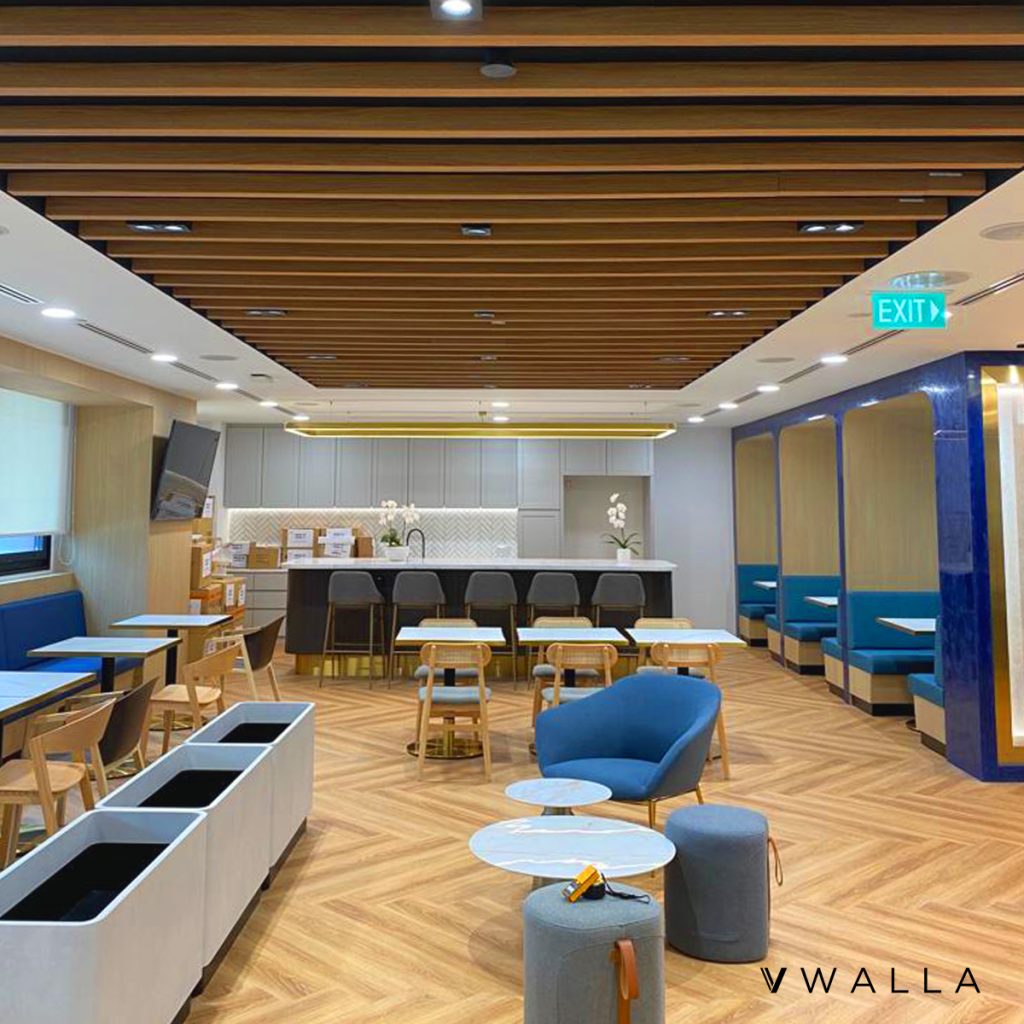
Sustainability
Sustainability is a significant trend in today’s architectural landscape, and WPC is at the forefront of this movement. Made from recycled wood fibers and plastic, WPC ceilings contribute to reducing environmental impact by repurposing waste materials. This eco-friendly characteristic aligns with the growing demand for sustainable building practices, making WPC ceilings a smart choice for eco-conscious projects. Moreover, WPC’s long lifespan reduces the need for frequent replacements, further contributing to environmental conservation.
Versatility in Design
WPC ceilings offer remarkable versatility in design. They can be customized to mimic various wood finishes and textures, providing designers with a wide range of aesthetic options. Whether aiming for a rustic charm or a sleek, modern look, WPC can be tailored to fit any design vision. Innovative applications of WPC go beyond traditional panels, with designers experimenting with different treatments and finishes, integrating WPC with other materials to create unique patterns and textures. This flexibility allows for creative ceiling designs that add depth and character to any space, making them a popular choice among architects and interior designers.
2. Aluminium Ceilings: The Future of Design
Durability and Maintenance
Aluminium ceilings represent the future of modern ceiling design. Known for their exceptional durability and low maintenance, aluminium panels are ideal for high-traffic and high-humidity environments. They resist corrosion, do not harbor microbes, and can withstand rigorous cleaning protocols, making them particularly suitable for public spaces and healthcare facilities. The robust nature of aluminium ensures that ceilings retain their appearance and functionality over time, even in challenging conditions.
Technological Integration
One of the most exciting ceiling trends in aluminium design is the integration of smart technology. Modern aluminium ceilings can be equipped with sensors and smart lighting systems that adapt to the occupants’ needs, optimizing energy consumption and enhancing comfort. These intelligent systems can simulate natural lighting patterns, supporting circadian rhythms and improving overall well-being. For instance, smart ceilings can adjust lighting intensity and color temperature throughout the day, creating an environment that boosts productivity during work hours and promotes relaxation in the evening.
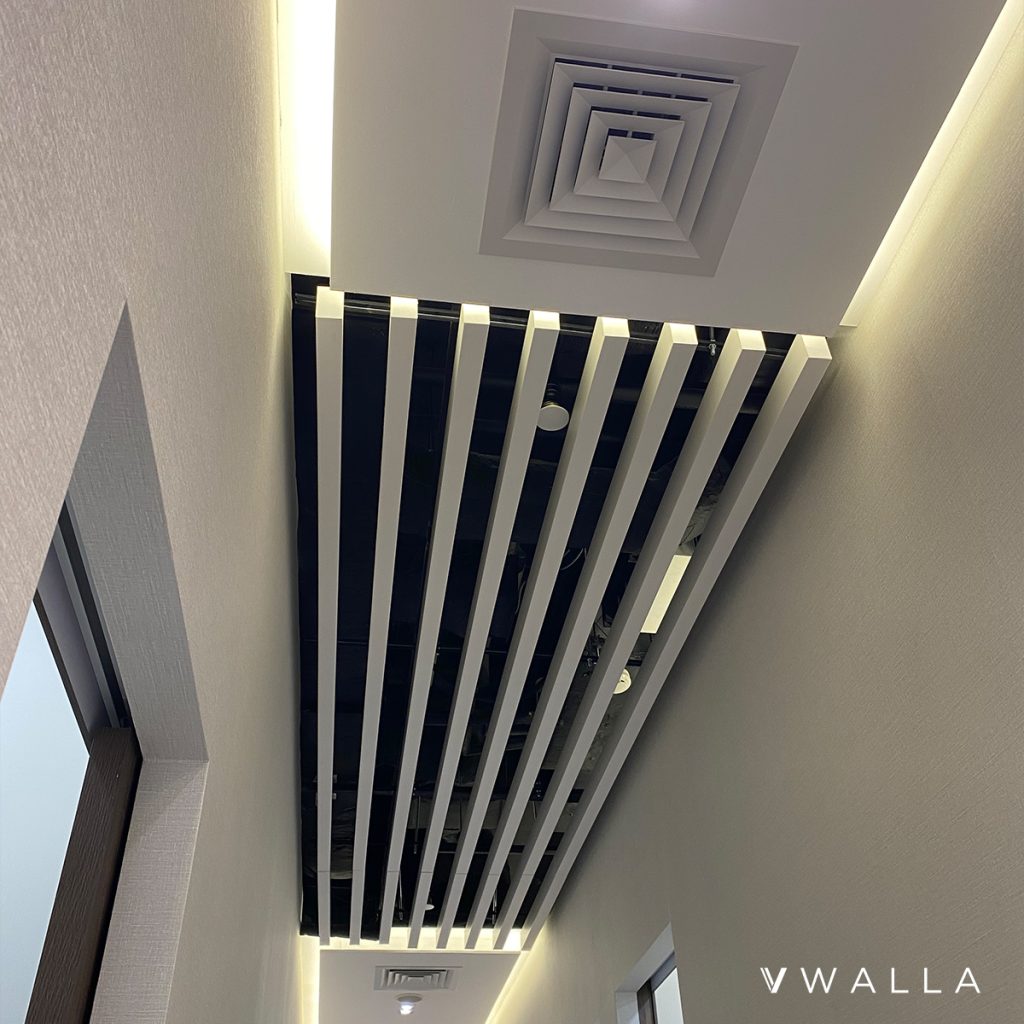
Sustainability and Aesthetics
Aluminium is a highly sustainable material, often made from recycled content and fully recyclable at the end of its life cycle. This makes aluminium ceilings an excellent choice for green building projects. Additionally, advancements in coating and finishing technologies allow aluminium to mimic the appearance of other materials, such as wood, providing aesthetic versatility without compromising on sustainability. This combination of sustainability and design flexibility makes aluminium ceilings a preferred choice for architects looking to create visually appealing and environmentally responsible spaces.
3. Acoustic Ceilings: Sound and Style
Acoustic Performance
Acoustic performance is a critical consideration in modern ceiling design, especially in open-plan offices, educational facilities, and public spaces where noise control is essential. Acoustic ceilings are engineered to absorb sound effectively, reducing noise levels and enhancing the acoustical comfort of a space. This is achieved through various materials and designs that target specific frequencies and sound types. Acoustic ceilings not only improve the auditory experience but also contribute to a quieter, more focused, and comfortable environment.
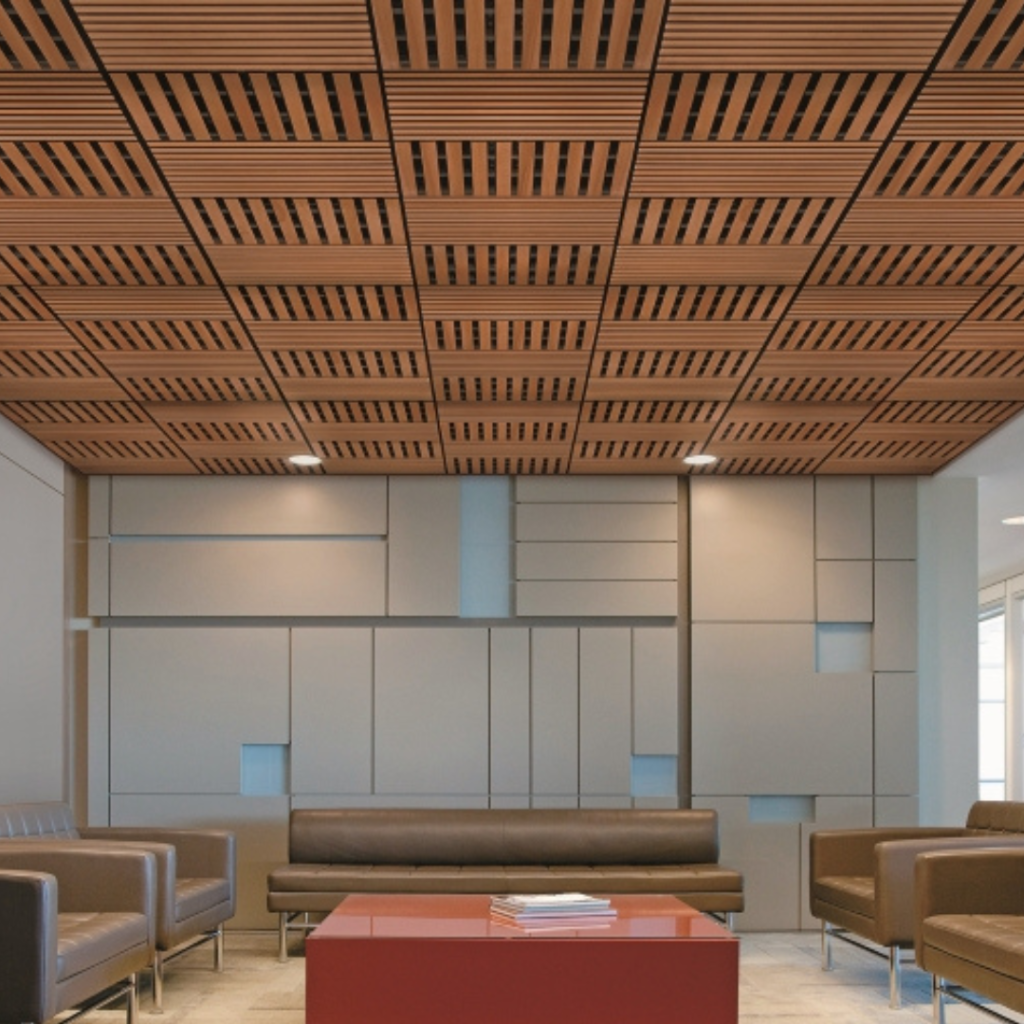
Design Flexibility
Acoustic ceilings offer significant design flexibility, ensuring that functionality does not come at the expense of aesthetics. Advanced manufacturing techniques allow for the creation of visually appealing designs that also offer superior sound absorption. Perforated panels, for example, can be designed with custom patterns, transforming ceilings into works of art while effectively managing acoustics. This blend of form and function makes acoustic ceilings an attractive option for spaces where both design and acoustics are important.
Human-Centred and Biophilic Design
Acoustic ceilings can also contribute to human-centred and biophilic design principles. By incorporating natural materials and organic shapes, these ceilings enhance occupants’ connection to nature, promoting well-being and reducing stress. Human-centred design focuses on creating environments that cater to the needs and preferences of the people who use them, improving comfort and satisfaction. Biophilic design, which integrates natural elements into built environments, has been shown to boost mood, productivity, and overall well-being. Acoustic ceilings that incorporate these principles help create harmonious spaces that resonate with the people living and working in them.
Why Choose Vwalla?
Vwalla is dedicated to providing residential and commercial spaces with wall panels and ceiling coverings of unparalleled quality. Here’s why Vwalla stands out:
- Superior Quality: Vwalla’s wall panels feature best-in-class materials and finishes for enduring surfaces that withstand the test of time. The brand prioritizes both durability and aesthetics, incorporating realistic wood grains and premium textured finishes to enhance any space.
- Fast Turnaround: With expansive local warehouses spanning over 10,000 sqft, Vwalla offers quick delivery, eliminating long lead times. Customers can receive their goods as soon as the next day, ensuring timely project completion without delays.
- One-Stop Solution: Vwalla provides specialized in-house installation services, saving customers time, money, and hassle. There’s no need to search for separate installers or carpenters – Vwalla has everything covered.
- Widest Selection: Offering over 400 combinations of wall panels and ceiling cladding profiles and colors, Vwalla ensures that customers can achieve the perfect look for any space. Options include wood, solid, metallic, marble, and many more finishes, catering to diverse design preferences.
Transform your space with Vwalla’s top-quality wall and ceiling solutions. For more information and to explore our extensive range, contact Us today.
Conclusion
The evolution of ceiling design reflects broader trends in architecture and interior design, where functionality, sustainability, and aesthetics converge. From the innovative sustainability of WPC to the modern versatility of aluminium and the acoustical sophistication of acoustic ceilings, today’s ceiling designs offer solutions that enhance both the visual appeal and performance of interior spaces. As we continue to explore new materials and technologies, the ceiling will undoubtedly play a more prominent role in shaping our built environment, transforming spaces from the top down.
By focusing on these cutting-edge ceiling trends, architects and designers can create environments that are not only beautiful but also functional, sustainable, and conducive to well-being. The ceiling, often referred to as the ‘fifth wall,’ is now a canvas for innovation and creativity, driving the future of interior design.
Luxury Living Room Ideas with Faux Marble Panels 2025
The allure of a Faux marble living room has never been more captivating, as homeowners and interior
PVC Wall Panels vs. WPC Wall Panels: Why WPC is the Superior Choice for Your Home
Choosing the right wall panels is essential for achieving both aesthetic appeal and functional durab
How to Maintain and Care for Your WPC Wall Panels
Wood-Plastic Composite (WPC) wall panels offer an attractive and durable solution for a variety of d




